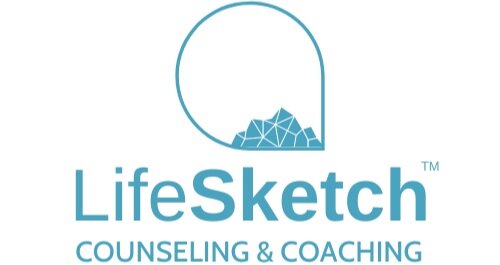Rejection Sensitivity Is Sabotaging Your Job Search — Here’s What to Do About It
Dreading the job search? You’re not alone.
For many of the adults I coach — especially those with ADHD — the job search isn’t just exhausting. It’s emotionally brutal. Why? Because few life experiences trigger repeated, ambiguous, and personal-feeling rejection quite like this process.
Let’s talk about that. And more importantly, let’s talk about how to handle it so you don’t get stuck, spiral into shame, or sabotage your own progress.
Why the Job Search Is So Emotionally Hard — Especially for ADHD Brains
Here’s my theory:
The job search is one of the most rejection-dense experiences most people will ever go through. And for people with ADHD — who are more likely to experience Rejection Sensitive Dysphoria (RSD) and emotional dysregulation — that’s a dangerous combo.
Every step of the process feels like a judgment: crafting a résumé, waiting to hear back, getting ghosted, being interviewed, getting passed over. It’s hard not to take it all very personally.
And worse — when we don’t get feedback (which is common), we tend to fill in the gaps with negative assumptions:
“I’m not good enough.”
“I don’t have the experience.”
“The market is terrible.”
But what if the issue isn’t you — it’s your strategy?
What if the résumé wasn’t tailored? What if the interview wasn’t practiced? What if the job was already unofficially filled?
Most of the time, we don’t know. But our brains assume the worst — especially when we’re emotionally dysregulated.
What Is Rejection Sensitive Dysphoria (RSD)?
Rejection Sensitive Dysphoria is a term used to describe the intense emotional pain people with ADHD often experience in response to perceived or actual rejection, criticism, or failure. The emotional response is out of proportion to the situation, and it can feel physically painful — like an emotional punch to the gut.
RSD is rooted in the core issue of ADHD: regulation.
ADHD isn’t just about inattention. It’s about dysregulation — of attention, emotions, energy, behavior, motivation, and yes, sensitivity to rejection.
Think of it this way: ADHD is like having a Ferrari engine inside a Honda Civic body. There’s a ton of power, passion, and potential — but the brakes, the steering, and the suspension? Not built to handle that kind of force. That makes regulation incredibly difficult. It’s hard to slow down, hard to stop, and hard to unpay attention once you're locked onto a negative thought.
But when you can learn to regulate, that same Ferrari engine becomes an incredible strength — one that lets you hyperfocus, connect deeply, and generate creative insight far beyond the average.
7 Signs and Symptoms of Rejection Sensitivity in Your Job Search
If you’re navigating a job search with ADHD and you’re dealing with RSD, you might notice some of these patterns:
Avoiding the process altogether because you're afraid of rejection or failure.
Obsessing over every résumé or cover letter, fearing that one wrong word will cost you the job.
Feeling crushed by ghosting or not hearing back — interpreting silence as personal failure.
Taking feedback as criticism, even if it’s constructive or neutral.
Over-apologizing or downplaying your strengths in interviews due to fear of being disliked.
Emotionally crashing after interviews, even if they went objectively well.
Withdrawing completely after one rejection, struggling to try again.
These aren’t signs of weakness. They’re signs of a nervous system that’s deeply sensitive to social evaluation and deeply dysregulated from chronic stress.
And while you can’t necessarily eliminate RSD, you can learn to navigate it — and even use your sensitivity as a strength.
The Key: The Job Search Isn’t About You
Here’s the reframe that changes everything:
The job search isn’t about you.
It’s about solving a problem for someone else. Once you make that shift — once you stop seeing yourself as the hero and instead become the guide — the process gets lighter, more strategic, and way more effective.
Employers aren’t hiring out of admiration. They’re hiring because they need help.
And that means your job is to:
Understand the employer’s pain points
Position yourself as the solution
Communicate your value clearly and confidently
Let’s walk through how to do that.
Step 1: Start With Empathy, Not Ego
When most people write a résumé or prepare for an interview, they focus on themselves:
What have I done?
Am I good enough?
Will they like me?
But employers don’t hire people out of admiration — they hire people to solve problems. So instead of centering yourself, start with empathy for the hiring manager.
Ask yourself:
What’s frustrating or difficult about filling this role?
What’s at stake if they hire the wrong person?
What kind of help are they desperately hoping to find?
Once you can answer those questions, you can frame everything — your résumé, your interview responses, your emails — around being a solution to those pain points.
Your résumé isn’t a self-portrait. It’s a marketing document.
Step 2: Rejection Sensitivity Is a Lens, Not a Fact
Rejection Sensitive Dysphoria is real. It’s the pain of perceived or actual rejection turned up to 11. And because so much of the job search is ambiguous (e.g., you don’t hear back from an employer), it’s easy to fall into the trap of interpretation.
No response? That must mean I’m not good enough. Didn’t get an interview? I must be unemployable. Another rejection? Everyone else is more qualified than me.
But here’s the truth: you don’t have enough information to make those judgments.
They might’ve had an internal candidate in mind.
Your résumé may not have been tailored to match their keywords.
They might’ve filled the role before even posting it.
Cognitive Behavioral Therapy (CBT) for Rejection Sensitivity in Your Career
This is where Cognitive Behavioral Therapy (CBT) techniques become helpful. CBT helps us:
Identify the trigger (e.g. rejection email or silence)
Notice the automatic thought (e.g. "I'm not good enough")
Surface the deeper belief (e.g. "I’ll never succeed")
Replace it with a more balanced reframe (e.g. "I didn’t tailor this résumé — next time I will")
Instead of spiraling, you start staying grounded. You turn reactions into awareness.
Step 3: Clarify Your Intentions for Each Step
Most of us approach job search activities with vague, unrealistic expectations:
"This résumé better get me a job."
"If I don’t hear back, it’s all pointless."
But what if your intention wasn’t to get the job? What if it was simply to:
Practice tailoring your résumé
Submit five clean, strategic applications
Get interview practice, even if the job isn’t ideal
Those are intentions you can control. And when ADHD brains feel in control, they regulate emotions more easily. When you don’t feel in control, that’s when the emotional storm takes over.
So before each step in your job search, ask yourself:
What is my intention here? What outcome am I aiming for — and what will I count as a win?
Step 4: Reframe the Job Search as Practice
What if you stopped thinking about job applications as one-shot, high-stakes performances?
What if you treated them like reps at the gym?
One application = one rep
One interview = one training session
One follow-up email = one more chance to strengthen your confidence
This doesn’t mean you’re wasting time. It means you’re building momentum. You’re training your brain and nervous system to tolerate rejection — to see it as a part of the process, not a commentary on your worth.
In fact, you might even intentionally apply to some “throwaway” jobs — ones you don’t care about — just to build reps and reduce the emotional intensity.
That’s how you get back in the game. Not with one Hail Mary application, but with consistent, mindful movement.
Step 5: Control What You Can — Let Go of What You Can’t
When people feel rejection-sensitive and emotionally dysregulated, they tend to focus on what they can’t control:
Who else is applying
What the recruiter thinks
Whether someone reads their résumé
But you can control:
How well you tailor your résumé and cover letter
How clearly you communicate your value
How intentional you are about each step
By focusing your energy on what’s within your control, you give yourself back the feeling of agency. And ADHD brains thrive on that.
Quick Recap: 5 Ways to Handle Rejection Sensitivity in the Job Search
It’s Not About You — Start with empathy for the employer
Use CBT Techniques — Map your thoughts and reframe them
Clarify Your Intentions — Set process-based goals, not outcome-based pressure
Reframe as Practice — The job search is a skill, not a performance
Control What You Can — Take back your power and focus your energy
Want Help Navigating This With Support?
This is exactly the kind of work I do with my clients. As a licensed mental health professional and career coach, I specialize in helping adults with ADHD create careers that actually work with their brains — not against them.
If you're stuck, burnt out, or spinning in the shame spiral of the job search, I’ve built programs to help:
✴ The ADHD Career Change
A 9-week hybrid coaching and online course program designed to help you figure out what’s next — and how to get there.
✴ The Job Search Accelerator
An A-to-Z roadmap from career clarity to résumé tailoring to landing the offer — built with mental health in mind.
Ready to Start Feeling Confident Again?
I believe that your sensitivity is not a flaw — it’s a signal. With the right tools and frameworks, you can turn rejection into resilience, and job search stress into intentional momentum.
Let’s build something better.
You’ve got this. And I’ve got your back.
Optional Free Download: Want a step-by-step worksheet to reframe rejection and build an ADHD-friendly job search plan?
👉 Download my free guide.




